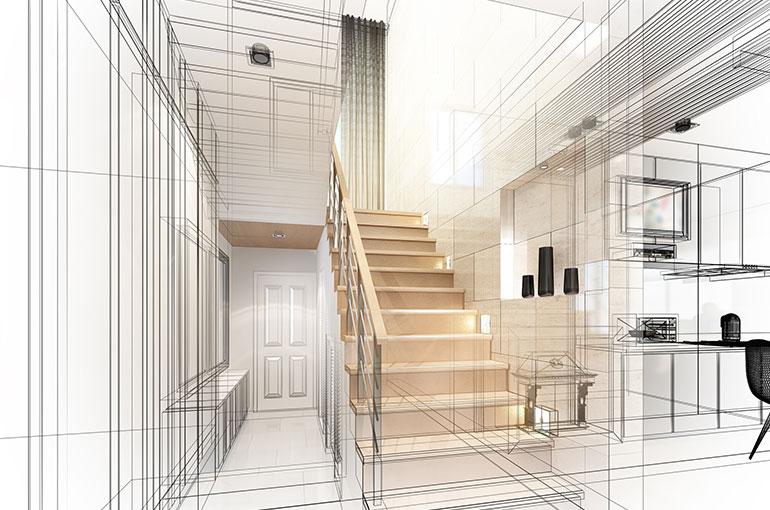A Comprehensive Introduction of Building Designs and Their Impact on Modern City Preparation and Advancement
Building designs have actually long served as a mirror to the societal worths and technical innovations of their time, playing an important role in shaping contemporary city planning and advancement. From the splendour of Neoclassicism to the practical technique of Brutalism, each style has introduced distinct principles that affect metropolitan looks and performance.
Historical Introduction of Architectural Designs

As cultures transitioned via the Center Ages, Gothic design emerged, identified by its verticality and elaborate detailing, mirroring the spiritual ambitions of the period. The Renaissance marked a revival of timeless ideals, merging art and architecture in cutting-edge methods that affected succeeding styles throughout Europe.

Today, architectural styles remain to evolve, driven by globalization and sustainability problems, mirroring a vibrant interplay between heritage and development. This historic overview underscores the relevance of design as a mirror of social development and as a stimulant for city advancement.
Trick Architectural Styles Explained
The diversity of architectural styles reflects the myriad influences that form our constructed atmosphere, each symbolizing distinctive features and social relevances. Secret architectural styles include Classic, Gothic, Baroque, Modernism, and Postmodernism, each standing for unique historical contexts and visual philosophies.
Timeless design, rooted in old Greece and Rome, stresses proportion, proportion, and using columns (cda architects). On the other hand, Gothic architecture, thriving between Ages, is identified by sharp arches, ribbed vaults, and flying buttresses, creating an ethereal high quality in cathedrals. Baroque design, arising in the 17th century, is noted by magnificence, intricate ornamentation, and a vibrant interaction of light and darkness
Innovation, which gained momentum in the early 20th century, focuses on feature over kind, making use of brand-new products like steel and glass to develop minimal frameworks. Postmodernism, responding against the austerity of Modernism, welcomes eclecticism and historical referral, commonly including lively aspects and irony.

Effect on Urban Planning
In forming the growth of cities, architectural styles substantially affect city planning decisions. The option of architectural design usually determines the appearances, functionality, and general character of city environments.
Moreover, architectural styles can impact zoning policies and land utilize policies. Urban organizers have to consider the prevailing architectural patterns when designing areas, guaranteeing that brand-new advancements harmonize with existing structures. This factor to consider promotes Full Report natural metropolitan landscapes and enhances area identity.
The execution of certain architectural styles can likewise affect socioeconomic elements within a city. As an example, premium contemporary styles may draw in upscale residents and companies, resulting in gentrification, while more cost effective housing options could focus on sensible and sustainable designs to accommodate varied populaces. Eventually, the interaction in between building styles and city preparation develops vibrant cities that show both historical context and contemporary requirements, forming the lived experiences of their inhabitants
Sustainability and Modern Design
Building styles play a critical role in addressing modern obstacles, particularly in the realm of sustainability. As urban locations expand and ecological issues magnify, modern style progressively embraces sustainable layout principles that prioritize power efficiency, source preservation, and very little ecological impact.
Contemporary building movements, such as biophilic layout and environment-friendly style, supporter for frameworks that harmonize with their surroundings, making use of all-natural materials and advertising biodiversity. These designs usually incorporate renewable resource resources, such as solar panels and wind turbines, to decrease dependence on nonrenewable fuel sources and reduced carbon footprints.
Additionally, the assimilation of innovative technologies, such as clever building systems, boosts energy monitoring, enhancing resource use while making certain passenger comfort. Ingenious water administration techniques, consisting of rainwater harvesting and greywater recycling, more add to sustainable urban settings.
Especially, sustainability expands beyond environmental concerns; it encompasses social and economic dimensions. By promoting area wellness and promoting inclusivity, contemporary building designs align with lasting development goals. The advancement of architectural practices continues to shape durable cities that not just meet the demands of the existing yet likewise safeguard the future for generations to come.
Community Interaction in Layout
Area interaction in design acts as a crucial bridge in between designers and the populaces they offer, guaranteeing that the built environment shows the demands and goals of its users. This joint procedure welcomes area participants to add their insights and preferences, fostering a feeling of ownership and duty toward the spaces they inhabit.
Effective community interaction utilizes numerous methods, such as workshops, studies, and public forums, to collect varied viewpoints. These techniques assist in a two-way dialogue, permitting engineers to understand regional contexts while empowering citizens to articulate their problems and wishes. This inclusivity not just improves the style quality however additionally promotes Read More Here social equity by dealing with the one-of-a-kind difficulties encountered by marginalized groups.
Additionally, community engagement can result in ingenious services that could not emerge in a standard design process. By integrating neighborhood expertise and social worths, designers can develop spaces that reverberate more deeply with individuals, boosting functionality and sustainability. Eventually, focusing on area involvement in style procedures causes this content environments that support social interactions, assistance wellness, and enhance area ties, thereby playing an essential role fit modern city landscapes.
Final Thought
Architectural styles have profoundly affected modern-day city planning and development, mirroring advancing cultural and technological contexts. As cities proceed to grow and adapt, the recurring discussion between building heritage and contemporary design concepts will remain crucial in developing inclusive, vibrant areas that enhance top quality of life and promote social equity.